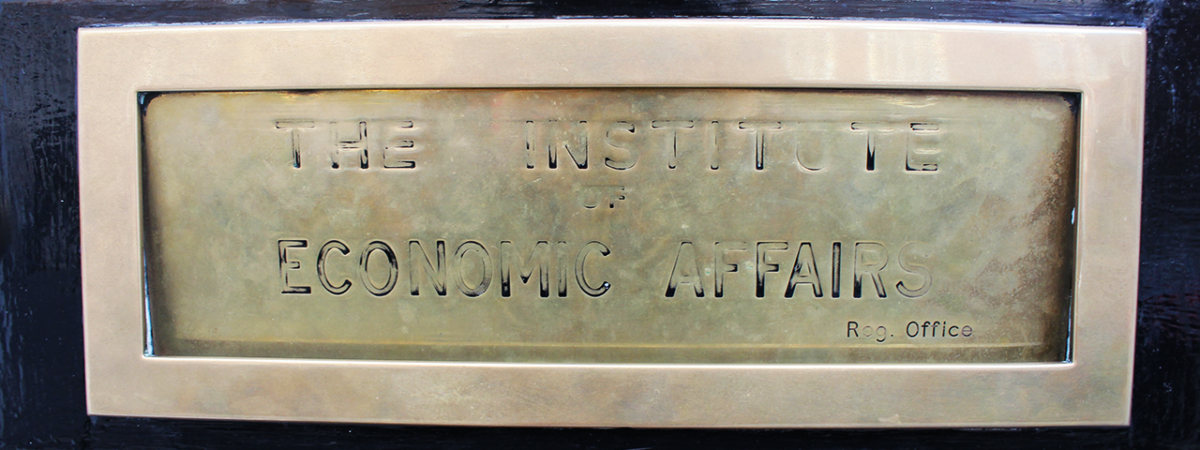Ever-expanding Green Belt must be tackled to solve UK housing crisis, says new report
SUGGESTED

A note from IEA Chairman Neil Record

IEA releases new, comprehensive book on socialism

A IEA new report on the UK's housing crisis
If a tenth of designated Green Belt land around Greater London were used for new housing, 160,000 new homes could be produced – a significant contribution to solving the urgent housing crisis in the capital, argues a new report from the Institute of Economic Affairs.
The report, “Delivering More Homes: Radical action to unblock the system”, argues that the current planning system is not working, and urgent reform is needed to increase the housing supply and extend consumer choice.
Co-authors Keith Boyfield and Robert Wickham promote plans to liberate the private sector to work with communities, investors and entrepreneurs to solve the housing crisis and produce the homes and facilities that are needed.
The housing crisis, explained
• Governments have continuously failed to produce the 250,000 to 300,000 news homes needed every year.
• House prices in the UK have increased three-and-a-half fold in real times since 1980, compared to the eurozone and in the US, where they have only increased roughly one-and-a-half fold over the same period.
• There is a strong preference for home ownership, with some 86 per cent of survey respondents indicating this preference for their accommodation. Yet the rate of home ownership is on the decline, from roughly 70 per cent in 2005, to roughly 63 per cent today.
• Labour mobility is being reduced because of home shortages in areas with high house prices. The heavy burden of rent on younger households poorly impacts the economy in places like London, which relies on competitiveness and the import of talent.
Tackling the Green Belt
• The size of the Green Belt has more than doubled since 1979 – its total size growing from 721,500 hectares to 1,634,700 hectares.
• This amounts to roughly 13 per cent of the land area of England, and covers one and a half times as much land as our towns and cities put together.
• The designation of Green Belt land is not attributed based on environmental quality; rather, it effectively represents a form of ‘discriminatory zoning’, keeping people living in urban areas away from the Home Counties.
• There is enough Green Belt land within the confines of Greater London – 32,500 hectares – to build 1.6 million average-size houses. Using a tenth of that land for building could produce 160,000 new homes – a significant response to the current under-supply of housing.
Tackling land availability
• Six per cent of land in England and Wales remains in public ownership – amounting to roughly 900,000 hectares.The Ministry of Defence owns approximately 170,000 hectares, while the National Health Service owns another 4,500 hectares.
• In urban local authorities, where pressure to build is high, 15 per cent of all public land is owned by the public sector. In some parts of the country, including Brighton and Barking, more than 40 per cent of all land is owned by the public sector.
• Disappointing progress has been made with public land disposals for building; a National Audit Office report into the number of new homes built on public land sold between 2011 and 2015 found that a mere 200 homes had been built.
Key recommendations
• All Green Belt boundaries should be reviewed, starting urgently with areas that do not have adequate land supply for the next ten years to meet known population requirements.
• Give early release to Green Belt land in the Birmingham, Manchester, and London areas that are within walking distance (roughly 800 metres) of rail or underground stations.
• Increase private sector initiatives, which may include village expansion schemes or building new communities that are embedded into the area’s Development Plan (also known as ‘Pink Planning’).
• Compulsory purchase procedures could be reversed and instigated by the private sector, to encourage Disposal Orders to release public land for the purpose of building.
Commenting on the report, co-author Keith Boyfield said:
“Politicians are fond of talking about how to tackle our alarming housing crisis – yet little is delivered.
“This new report shows how redundant public sector land can be released to meet this pressing need. The Green Belt – which has more than doubled in size since 1979 – can be used to better house our rapidly rising population, and by adopting of a bottom-up, community-sensitive approach, we can create new villages and towns that people will clamour to live and work in.”
Commenting on the report, co-author Robert Wickham said:
‘This paper shows how in a post-Brexit world, more homes can be created by a general presumption in favour of development, enabling communities and entrepreneurs to work together.
“The creation of choice for consumers will improve the quality of development to the benefit of urban and rural areas.”
For media enquiries please contact Kate Andrews, Associate Director: kandrews@iea.org.uk
020 7799 8925 or 07476 915 072
To download the IEA’s paper ‘Delivering More Homes: Radical action to unlock the system’, click here.
Co-author Keith Boyfield an economist, a Fellow at the IEA, and the author of over one hundred publications on public policy and planning issues, economic development and regulatory policy.
Co-author Dr Robert Wickham is a chartered surveyor and chartered town planner, and is currently a research fellow at Anglia Ruskin University.
For more IEA research on housing, click here.
To download the winning entry of the IEA’s 2018 Breakthrough Prize – outlining a free-market policy to solve the UK’s housing crisis – click here.
The mission of the Institute of Economic Affairs is to improve understanding of the fundamental institutions of a free society by analysing and expounding the role of markets in solving economic and social problems and seeks to provide analysis in order to improve the public understanding of economics.
The IEA is a registered educational charity and independent of all political parties.



